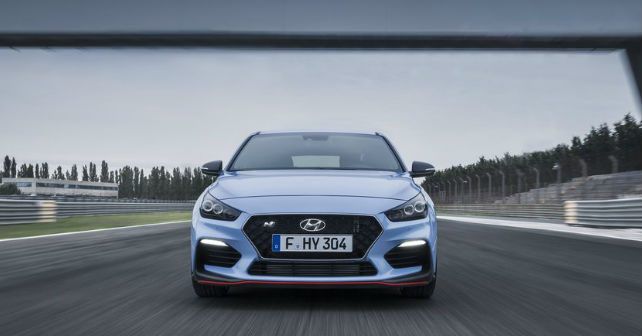It was towards the end of 2013 that Hyundai established its N Performance brand, hoping to primarily crack the Euro hot-hatch segment. Now, N Performance’s first fruit has fully ripened, and is ready to burn some rubber.
i30 N
Meet the 271bhp i30 N - Hyundai’s wildest hatchback yet. Born with the aim of displacing the legendary Volkswagen Golf GTi off its hot-hatch throne, the latest from Hyundai will also go head to head with other renowned hot-hatchbacks like Honda Civic Type-R, Ford Focus ST and Seat Leon Cupra, among others.
Turning petrol into kinetic energy is a 2.0-litre, 4-cylinder turbocharged engine, pumping 271 horses and 352Nm of twist force. Hyundai is aiming to strike the purist cord with this car - you only get a proper old-school 6-speed manual gearbox feeding power to the front wheels. No auto box for the time being. The hatchback can launch from 0-100km/h in 6.1 seconds.
Hyundai i30 N features five drive modes - Eco, Normal, Sport, Sport N and N Custom, which can be selected through steering wheel buttons. The modes can adjust i30 N’s damping harshness, engine responses and exhaust tune.
Aesthetic modifications to the i30 N come in the form of more aggressive front and rear bumpers, which feature better aerodynamic properties. There are wider intakes and a rear diffuser that helps to reduce lift at speed. Twin exhaust - a typical of any performance oriented car, sit at the rear. The sides are flanked by 18-inch or optional 19-inch alloy rims - built specifically for the N.
The Hyundai i30 is in its third generation now, and this is the first model from the entire Hyundai line-up to get a proper performance variant. The Korean company has never been known for making fun to drive cars in the past, and the i30 N aims to completely change the brand’s perception.
i30 Fastback
Alongside the hot i30 N, Hyundai dropped a surprise - the i30 Fastback. A fastback is a car type whose roofline slopes continuously down at the back - its third box flows much more seamlessly into its back as compared to a traditional sedan.
This, again, is the first time in its three generations that the Hyundai i30 has gotten such a version. Until now the car was only available as a hatchback and a station wagon. The i30 Fastback shares most of its mechanical components with the standard i30 - it won’t feature the N’s powerful motor.
The i30 is made for Europe - a place where people prefer large hatchbacks and wagons. For other markets like Asia and North America where people have a better taste for sedans, Hyundai sells the i30’s mechanically identical cousin - the Elantra.


























Write your Comment